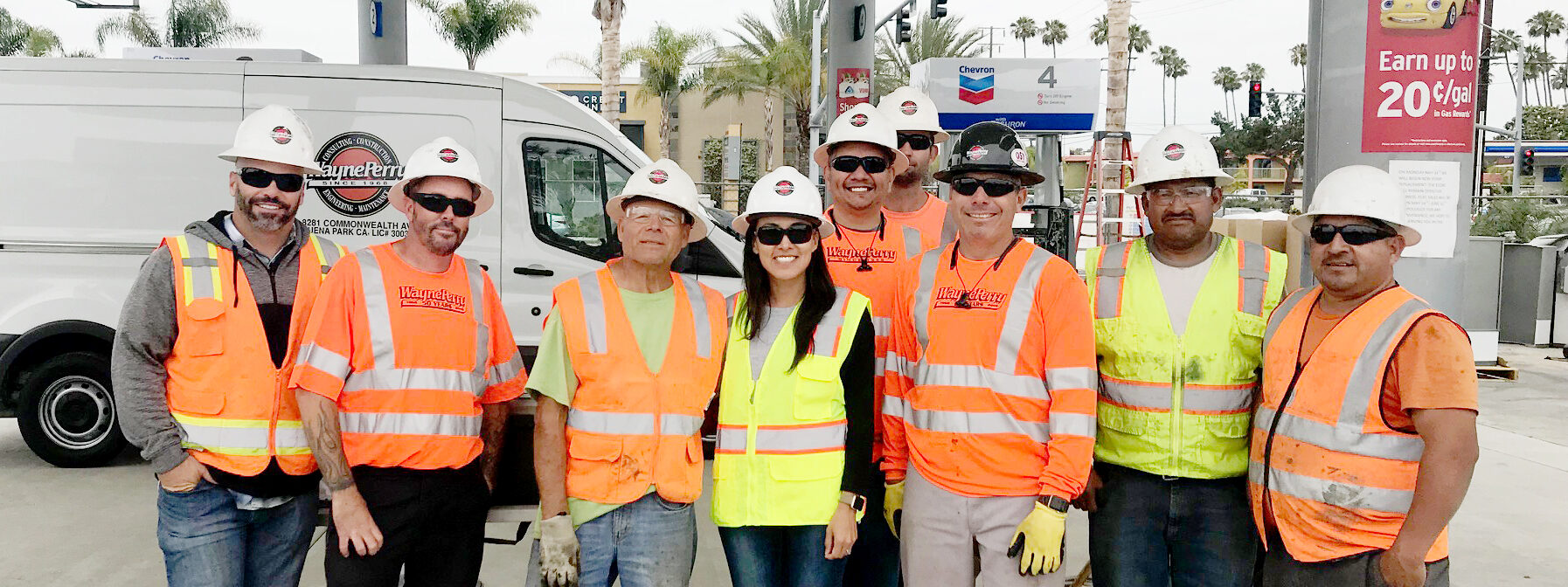Owning a gas station comes with a unique set of challenges that includes the risk of contamination due to fuel leaks. Understanding the critical steps involved in remediating a fuel leak is the key to avoiding costly penalties, litigation, and business loss.
Fuel leaks can originate from various sources, including leaking USTs and inadequate containment measures. By following these steps, you can spare yourself and your staff a major headache and safeguard the future of your business:
- Obtain a Site Evaluation from Qualified Experts
A carefully implemented, thorough site evaluation is the first step to understanding the extent of contamination. During the evaluation, soil and groundwater samples are taken at various locations within and around the fuel leak. This data characterizes the contaminants, their concentrations, and migration pathways, forming the basis for a targeted remediation strategy. - Conduct a Risk Assessment
Following the site evaluation, a risk assessment is performed to determine the potential impact of the leak on human health and the surrounding environment. This step identifies which areas require immediate attention and informs the development of a risk-based remediation plan. - Develop a Remediation Plan
Based on the site evaluation and risk assessment, a comprehensive remediation plan should be developed that outlines the specific steps and technologies to be used to clean up the contaminated site. The plan can include soil excavation and removal, UST removal and tank disposal or in-situ tank abandonment, and groundwater remediation. - Decommission Leaking Tanks and Remove Contaminated Soil
Localized contamination is typically handled with in situ remediation like vapor extraction or bio attenuation. Normally excavation occurs during decommissioning. You do not know about the contamination until you pull the tank out.
In the event of a leaking UST, it is necessary to safely remove the remaining hazardous materials and seal up the tank to decommission the tank. The tank can either be safely transported to an official disposal site, or it can be abandoned in place. Any contaminated soil must also be excavated and properly disposed of according to local, state, and EPA regulations. - Perform In-Situ Treatment When Warranted
In cases where excavation is impractical or disruptive, in-situ treatment methods are employed. These involve treating contaminants without physically removing the contaminated soil. Technologies such as chemical oxidation, bioventing, and phytoremediation are used to break down or neutralize pollutants in place, minimizing site disturbance. - Perform Groundwater Remediation
Contaminated groundwater is a common issue at fueling sites and may be required to be addressed. Various methods, including pump and treat systems, permeable reactive barriers, and enhanced natural attenuation, are employed to restore groundwater quality to acceptable levels and prevent further migration of contaminants. - Monitor and Verify Your Site’s Ongoing Health
After implementing the remediation plan, ongoing monitoring is crucial to assess the effectiveness of the treatment that has been performed. Regular sampling of soil and groundwater ensures contaminant levels decrease, and verification monitoring provides early detection of any unforeseen issues, allowing for timely adjustments to the remediation strategy.
Station owners must address the environmental challenges associated with contamination from fuel leaks as soon as they occur. Renewing a contaminated fueling site is a complex process that requires a systematic approach—from initial assessment to final verification. Identifying and understanding the sources of contamination, conducting thorough site assessments, and developing a tailored remediation plan are key steps in this process.
By employing a combination of excavation, in-situ treatment, groundwater remediation methods, and tank abandonment when necessary, you can rehabilitate your fueling station to meet environmental and regulatory standards. Be sure to work with a team that’s experienced in remediation and environmental protection for the best results.





